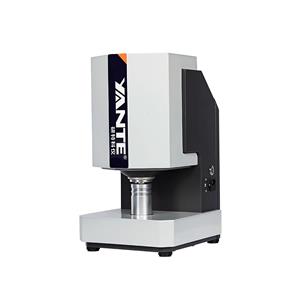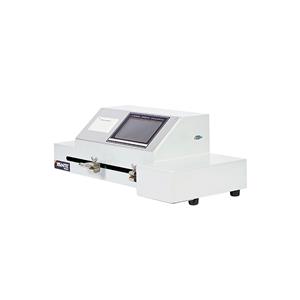Zero setting, calibration, and protection control of Box Compression Tester
Box Compression Tester (7-inch touch screen version) is our company's latest high-precision quality inspection equipment for cardboard boxes and tubes. It is mainly used for compressive strength testing, fixed value strength testing, stacking testing, or full box compressive strength testing and testing of packaging containers made of other materials for various types of corrugated cardboard boxes.
Box Compression Tester is designed strictly in accordance with national standards, and all parameters required by the standards can be set; All test results can be counted, displayed, and printed. To adapt to various testing conditions, there are multiple types of specimen crushing confirmation methods available for users to choose from: pressure difference, deformation amount, pressure difference and deformation amount, and automatic mode.
Due to the hardware configuration advantage of this testing machine, an adaptive coordinate curve is displayed during testing (i.e. the coordinate range automatically increases as the data increases), and each test curve can be browsed and printed.
Box Compression Tester is equipped with upper and lower limit protection and sensor overload fast protection (the sensor will stop immediately after an instant overload within 25uS).
Appearance composition
The instrument adopts an electromechanical integrated structure.
The mechanical part is used to hold the specimen and measure the force. It is mainly driven by the operation of the motor to move the upper pressing plate downwards and hold the sample placed on the lower pressing plate.
The electrical part is used for parameter setting, measurement display, action control, and result printing. Mainly composed of power supply, motherboard, display board, motor driver, printer, etc.
Zero adjustment
Before the standby test, if there is no force on the upper pressure plate and the force value is not displayed as zero, click "0" to adjust it to zero.
The zero force value displayed on the upper pressure plate should be ± 0.1% of the measured maximum force value when there is no pressure. If it exceeds the limit, click "0" to zero it, and then observe the zero drift value within 15 minutes. If it is normal, the testing work can be carried out.
Force calibration
The instrument has been calibrated before leaving the factory. When the actual static force value does not match the actual value, corresponding calibration must be carried out to ensure the accuracy of the measurement. In any testing mode, click the "Settings" button to enter the parameter setting interface, and then click "Zero Adjustment" to enter the calibration interface. The display is as follows:
1) Select the calibration method as 【 2 points 】 and press the "0" key to zero.
2) Place a standard force gauge in the middle position of the lower pressure plate, adjust the position of the upper pressure plate to be close to the calibration force gauge, then adjust the speed to 1mm/min, and press the "▼" key. When the pressure gauge shows 60% of the range (such as 10000N, 6000N), press the "▼" key to stop. Observe the error between the current force value of the instrument and the standard force measuring instrument. If the error is ± 0.5%, calibration is not necessary. Press the "▲" button to unload the pressure, and then press the "■" button to exit. Otherwise, proceed to the next calibration step.
3) Calibration: Observe the error between the current force value of the instrument and the standard force gauge. When the error exceeds ± 0.5%, click [Force Value], enter the standard value to match the displayed value of the standard force gauge, click "←", enter password 3215 to confirm saving, and then click "▲" to remove the pressure.
4) Click "▼" again to reach 20%, 40%, 60%, 80%, and 100% of the maximum range of the instrument
Compare the pressure errors at each point to see if they are correct



